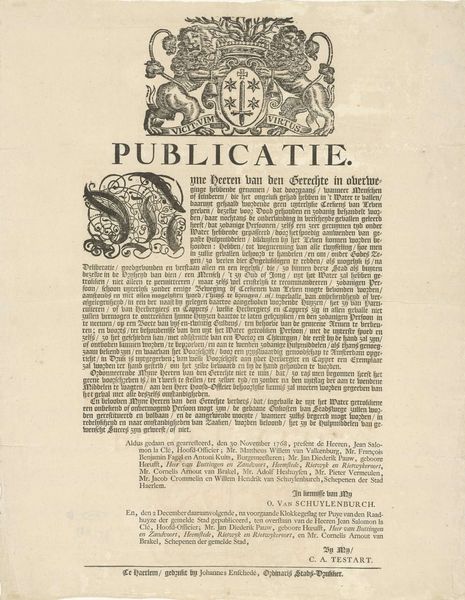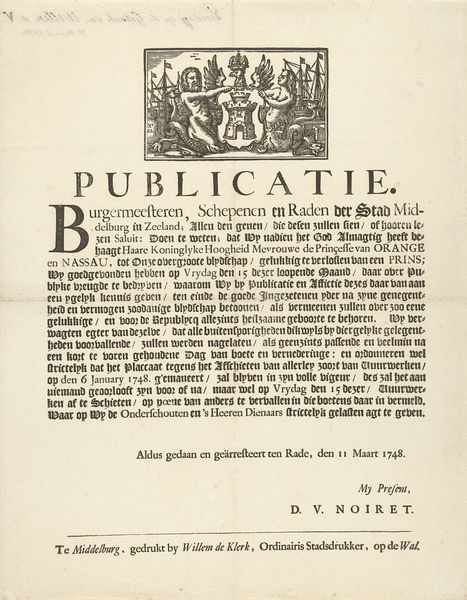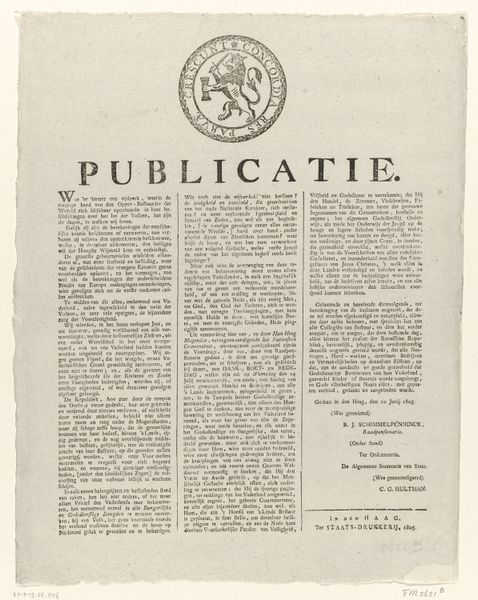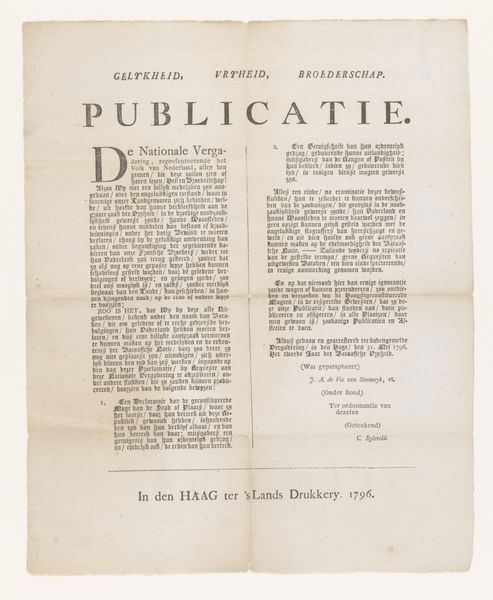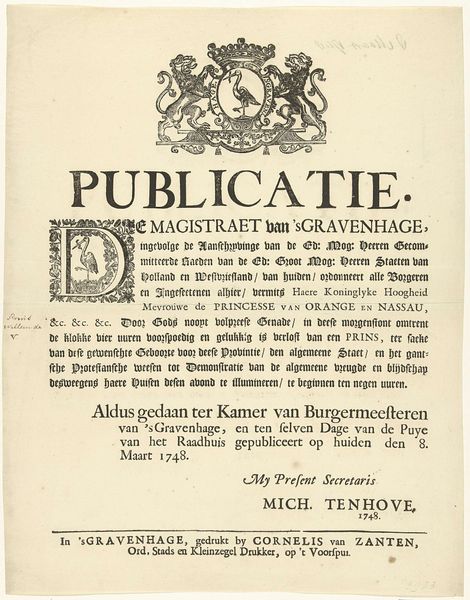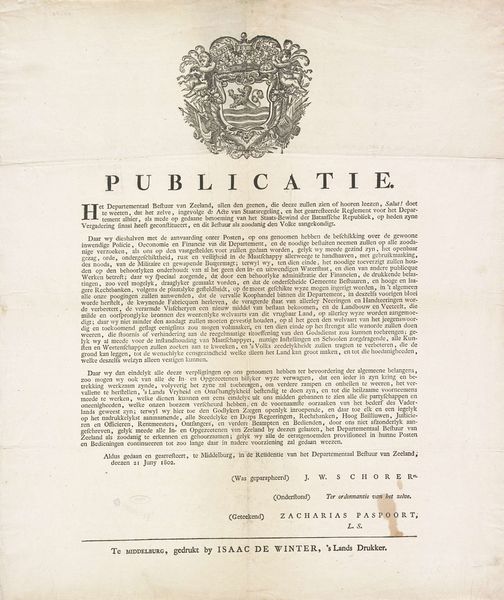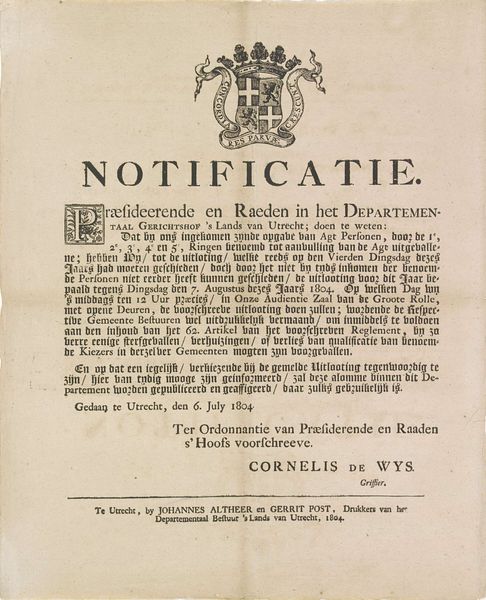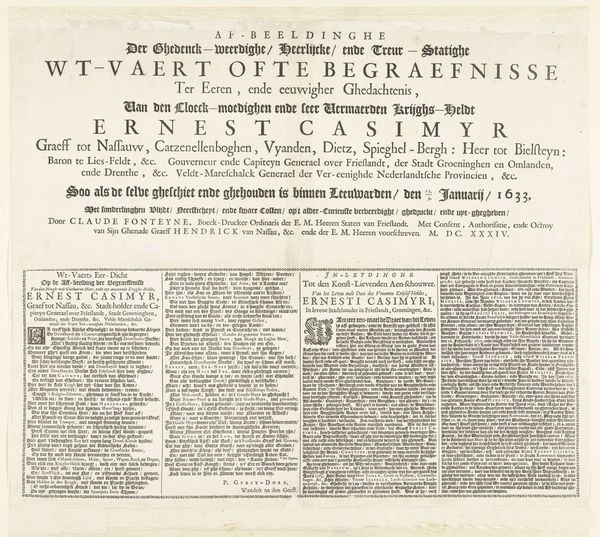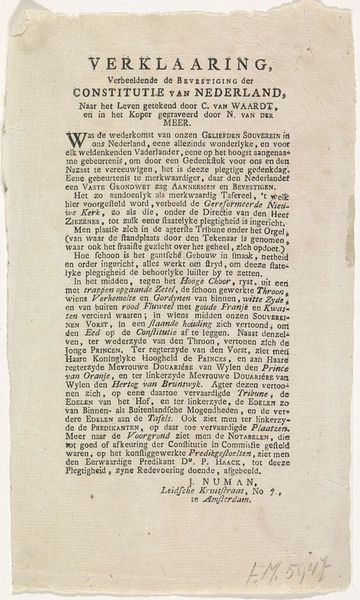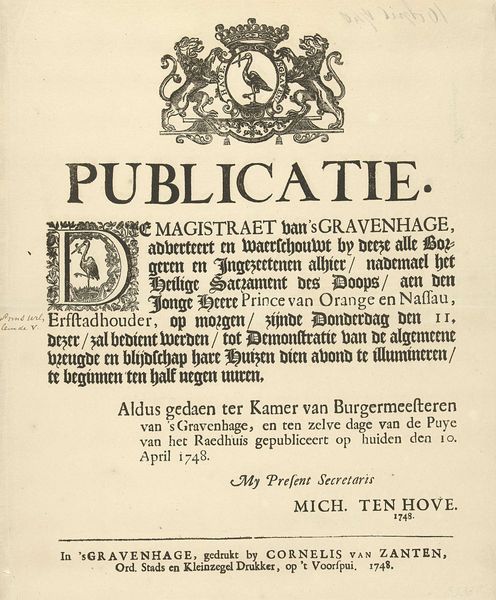
Bekendmaking door de Staten van Zeeland over het illumineren voor prins Willem V, 1766 1766
0:00
0:00
graphic-art, print, engraving
#
graphic-art
#
dutch-golden-age
# print
#
engraving
Dimensions: height 411 mm, width 320 mm
Copyright: Rijks Museum: Open Domain
Curator: Let's talk about this… well, it's essentially a public announcement, printed in 1766 by Johan Bakker in Middelburg. It was commissioned by the States of Zeeland. Editor: Gosh, my first reaction is… bureaucratic! But also strangely elegant. All that tight text framed by that decorative coat of arms. It feels both authoritarian and rather meticulously crafted, you know? Curator: Precisely! It’s a declaration regarding the illumination – that is, festive lighting – to celebrate Prince Willem V coming of age. It specifies that illuminations aren’t required on his actual birthday, but will be scheduled for when the Prince attends a session of the States General. So it controls the visual display of loyalty, in a way. Editor: Ah, the Dutch and their love of order, even when celebrating! There’s a real push and pull here… a desire to honor the Prince, but also to keep things firmly under their control, politically speaking. Curator: Absolutely. Public displays of emotion and allegiance were highly regulated. This print is not just conveying information; it's actively shaping how that information is received and acted upon by the public. Note the careful wording; "niemand zal gehouden en verpligt zjn"—no one is compelled… but everyone is expected. Editor: Sneaky! It is more of a gentle directive masquerading as a piece of information. The coat of arms… a lion brandishing a sword, surrounded by weaponry, suggests authority but almost feels like overcompensation for that "gentle directive". Am I reading too much into this? Curator: Not at all! The imagery reinforces the power structure. These announcements were deliberately designed to project authority and stability, reassuring the populace of the ruling elite’s power, especially during periods of political tension or transition. It's all image management. Editor: Makes you wonder how the ordinary citizen felt reading this—did they feel secure and led, or patronized and ordered about? Anyway, looking at this piece from our point of view now, it gives you a tiny little peephole into life in the Netherlands at the time. Curator: Yes, art often opens a window into worlds long past. Editor: Absolutely. And perhaps it might even nudge people to question authority today, which would be excellent!
Comments
No comments
Be the first to comment and join the conversation on the ultimate creative platform.

